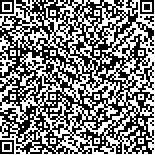张怡,恽文伟,张敏,等.低频重复经颅磁刺激联合高压氧治疗卒中后非流利性失语的疗效观察[J].中华物理医学与康复杂志,2019,41(7):512-516
扫码阅读全文

|
| 低频重复经颅磁刺激联合高压氧治疗卒中后非流利性失语的疗效观察 |
|
| |
| DOI:DOI:10.3760/cma.j.issn.0254-1424.2019.07.008 |
| 中文关键词: 重复经颅磁刺激 高压氧 卒中后非流利性失语 |
| 英文关键词: Transcranial magnetic stimulation Hyperbaric oxygen Stroke Non-fluent aphasia |
| 基金项目:国家自然科学基金面上项目(81471338);常州市卫计委青年人才项目(QN201714);常州市应用基础项目(CJ20180071) |
|
| 摘要点击次数: 6065 |
| 全文下载次数: 6867 |
| 中文摘要: |
| 目的 观察低频重复经颅磁刺激(rTMS)联合高压氧(HBO)治疗卒中后非流利性失语患者的疗效。 方法 采用随机数字表法将48例脑卒中后非流利性失语患者分为对照组、HBO组及观察组。3组患者均给予常规康复干预(包括药物治疗、语言训练及肢体康复训练等),HBO组患者在此基础上辅以HBO治疗,观察组患者则辅以HBO及低频rTMS联合治疗,磁刺激部位为右侧大脑半球Broca镜像区,磁刺激频率为1 Hz。于治疗前、治疗4周后分别使用中文版西方失语症成套检验(WAB)评估患者语言功能情况,采用改良Barthel指数(MBI)评价患者日常生活活动能力改善情况。 结果 治疗前3组患者WAB各项指标评分及MBI评分组间差异均无统计学意义(P>0.05);经4周治疗后,发现HBO组、观察组WAB各项指标评分及MBI评分均较治疗前明显改善;并且观察组WAB自发言语评分[(9.13±3.01)分]、听理解评分[(150.19±34.36)分]、复述评分[(83.94±18.20)分]、命名评分[(75.63±21.71)分]、AQ评分[(65.18±16.22)分]及MBI评分[(67.38±16.15)分]均显著优于HBO组及对照组(P<0.05),HBO组上述指标评分亦显著优于对照组(P<0.05)。 结论 低频rTMS联合HBO治疗可有效改善卒中后非流利性失语患者早期语言功能,提高其日常生活活动能力及生活质量,该联合疗法值得在卒中后失语患者中推广、应用。 |
| 英文摘要: |
| Objective To investigate the effect of repeated application of low-frequency transcranial magne-tic stimulation (rTMS) when combined with hyperbaric oxygen (HBO) in the treatment non-fluent aphasia after a stroke. Methods Forty-eight stroke survivors with non-fluent aphasia were randomly assigned to a control group, an HBO group or an observation group, each of 16. All received conventional rehabilitation therapy consisting of drug therapy, speech training and conventional physical exercises, while the HBO and observation groups were additionally given HBO and rTMS combined with HBO respectively. The 1 Hz rTMS was applied over the Broca′s homologues of the unaffected hemisphere. Before and after 4 weeks of treatment, the Western Aphasia Battery (WAB) was used to evaluate the subjects′ language function and the Modified Barthel Index (MBI) was used to assess their ability in the activities of daily living. Results There was no significant difference in the average WAB scores among the three groups before the treatment. After 4 weeks of treatment the average WAB and MBI scores of the HBO group and the observation group had improved significantly, and there was then a significant difference among the three groups. The observation group was performing significantly better than the HBO group and the control group in spontaneous speech, auditory comprehension, repetition, naming, AQ score and MBI score. Pairwise comparisons showed that the observation group′s average WAB score, spontaneous speech, auditory comprehension, repetition, naming, AQ score and MBI score were the best, followed by those of the HBO group and then those of the control group. All of the differences were statistically significant. Conclusions Low-frequency rTMS combined with HBO can significantly improve the language function and the quality of life of patients with non-fluent aphasia. Such combined therapy is worthy of clinical promotion and application. |
|
查看全文
查看/发表评论 下载PDF阅读器 |
| 关闭 |
|
|
|